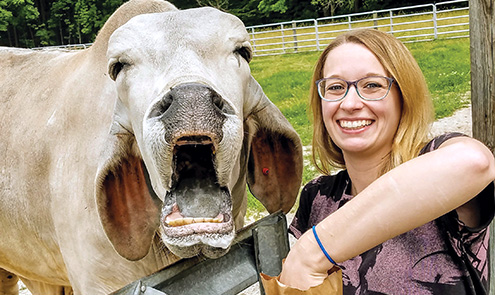Tolkien once said, “It is not the strength of the body that counts, but the strength of the spirit.” Although he may not have intended it, these words of wisdom may have no better target audience than new amputees. Tolkien’s words fittingly emphasize that it is not our physical capabilities that determine our limits, but our willingness to endure, especially in the face of adversity.
Step One: Express Sorrow and Grief
Losing a part of one’s body can be akin to losing a loved one regarding the grief felt. Whether it’s a digit or a limb, this loss is often traumatic and unexpected; a piece of oneself, which has been known and taken for granted throughout life, has now gone or changed forever. Often it takes a while for grief to set in due to shock; amputation is not in the brain’s playbook of normal occurrences. There are no rules for how long it takes for grief to set in or how long it will last. What’s important is that individuals take whatever time is needed to express their sorrow without guilt or shame. Whether it be through crying, writing, or other forms of artistic expression, grieving after amputation is extremely vital.
Step Two: Rely on Others
Once the grieving process has started, another important step begins—rallying the help of others. The therapeutic value is immeasurable; therefore, it is essential that amputees don’t isolate themselves entirely. At first solitude may seem ideal. It offers a chance to hide the injury, which is undoubtedly foreign in both sight and sensation. However, this can open the door for depression, loneliness, and anxiety; these negative emotions hinder the healing process. The company of others can offer a healthy distraction, which is greatly needed in the early stages of recovery. Watching upbeat movies and playing games with others are great activities to focus attention elsewhere and relax.
Step Three: Talk Therapy
Whether it’s with a medical professional, family member, close friend, internet stranger, or any combination, talking is vital to persevering after amputation. The alternative, bottling up emotions, is dangerous and counterproductive. Talking helps work through the emotions, fears, doubts, and sorrows that follow an amputation. It also allows those close to the individual to understand and better help them. It is crucial for an amputee to understand that the emotions and apprehensions felt are not out of line, and the help of an experienced medical professional is highly recommended. Talking with fellow amputees, whether it be through support groups or internet forums, is also beneficial and new amputees may find themselves feeling less alone. In addition, they may find experienced amputees who can provide helpful advice on new ways of carrying out routine activities.
Step Four: Develop New Routines
Adapting to new methods of doing tasks is never easy, but as an amputee it’s a necessary struggle. Although the degree of difficulty will vary for everyone, the end goal is always the same: return to a sense of normalcy—this means the ability to perform the same tasks as before as independently and efficiently as possible. There are a variety of products to help amputees do everyday tasks. For example, those who have suffered finger or hand amputations may benefit from a cutting board that holds vegetables in place, allowing them to chop and dice while using only one hand. There are even specially designed rocker knives that are much easier to grasp and maneuver for those who have lost grip strength or dexterity. In addition, prosthetic devices are remarkable and can be used to replace just about any body part. Whether an individual opts for aesthetics or functionality, prostheses can be an excellent step toward adapting after amputation.
Step Five: Acceptance
Acceptance is perhaps the most difficult hurdle following the loss of a body part. No matter how hard one fights for normalcy, life will always be different than before. This fact of permanency, coupled with an ever-present visual reminder of losing a part of oneself, can result in a struggle for finding peace that can take up to several years. Even after acceptance is reached, there may be times when it is lost again; whether this is due to a snide comment, a sideways glance from a stranger, or simply an off day, this loss of acceptance can seemingly put an individual back at square one. The important thing to remember is the previous steps taken and that acceptance can always be regained. Taking notice of the improvements, no matter how small they may seem, will yield positive results, as opposed to focusing on what has yet be achieved. Additionally, surrounding oneself with loving and supportive individuals may provide a boost in confidence that, in turn, helps them find peace with their injury. In time, the good days will outnumber the bad and reaching acceptance will become second nature.
Through following these steps, an individual may finally reach acceptance of his or her injury. Those who have experienced amputation must remember, it is not the size of the obstacle or the speed at which one overcomes it that shows strength, but the persistence to endure.

Jacqueline wrote this essay for a college project. It has been shared with permission and edited for length. Jacqueline continues to advocate for mental health and perseverance for herself and other amputees.
For more information, or to see if a Naked Prosthetics device will work for you, please visit our Customer Care page.


